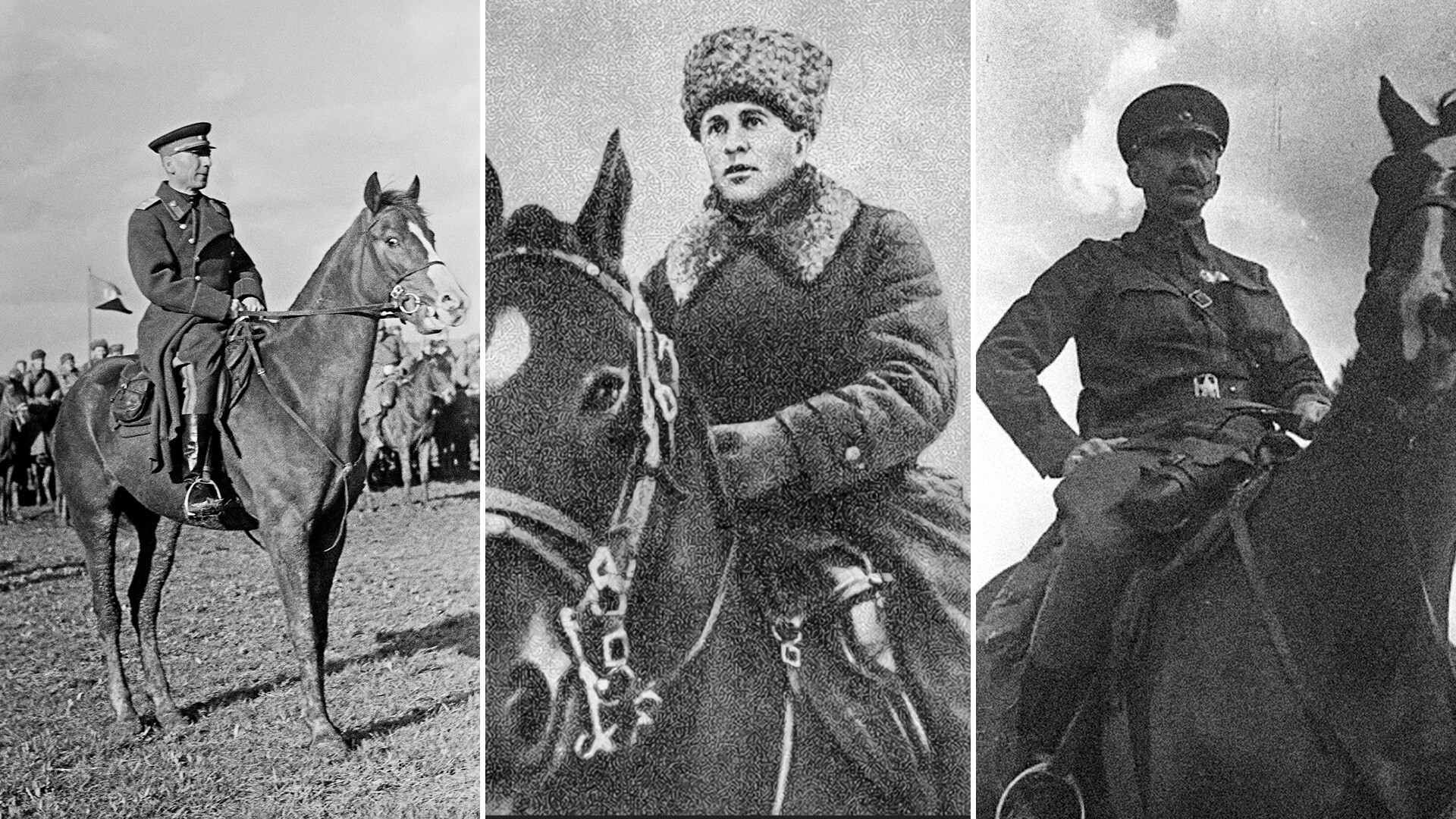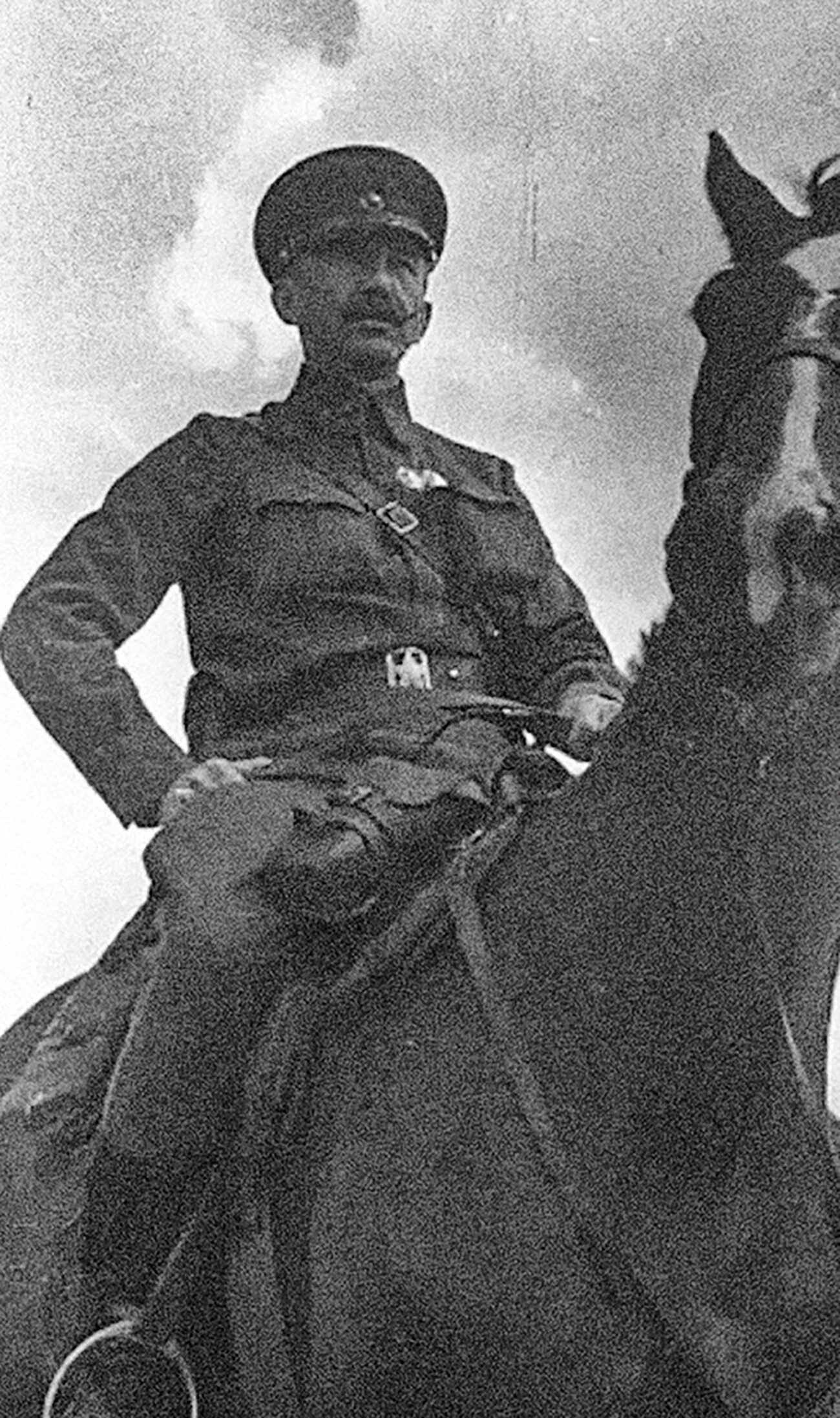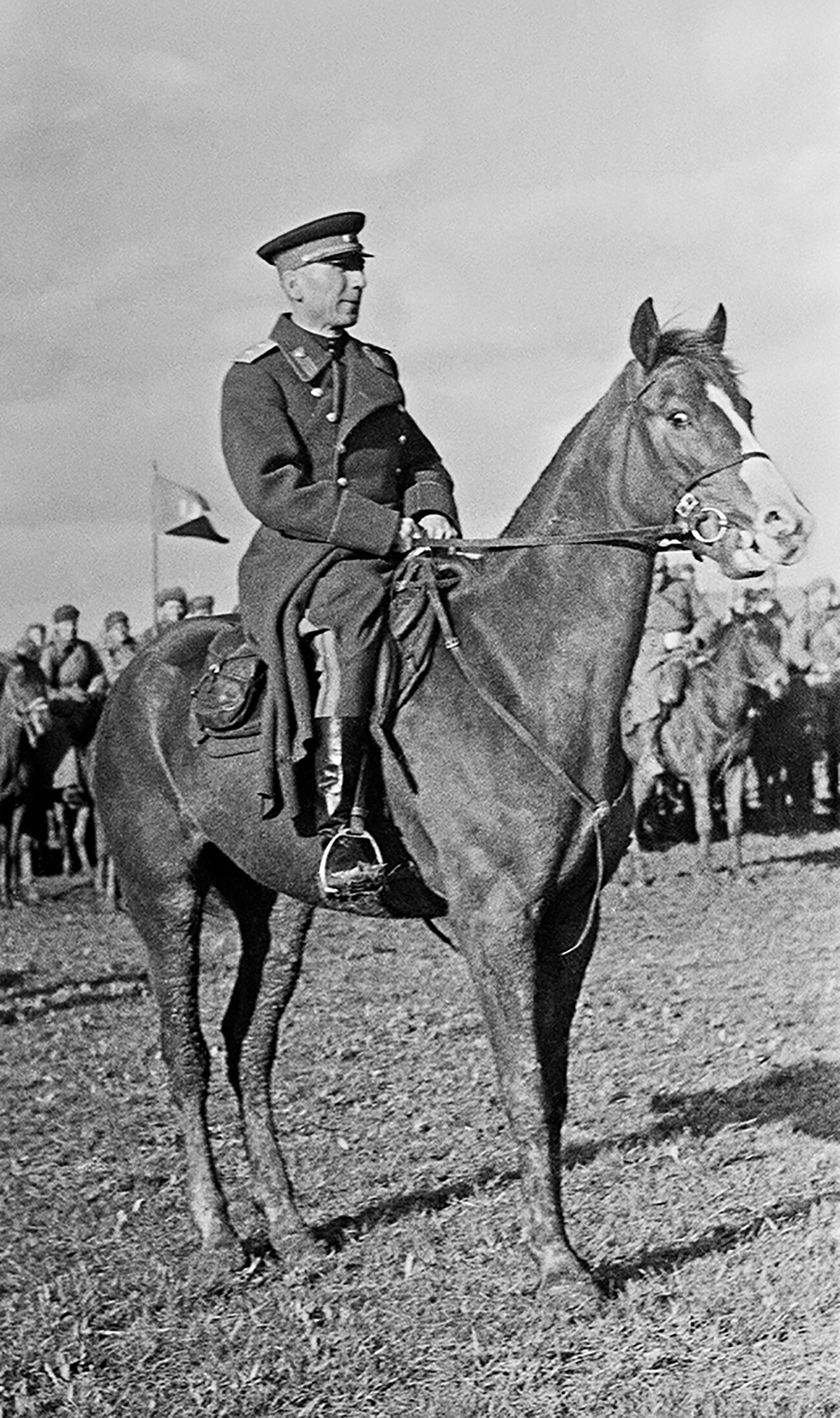
By the beginning of the most terrible conflict in the history of mankind, the cavalry was already outdated. Nevertheless, it was not completely rendered useless.
Cavalry units were notable for their maneuverability, they didn’t need fuel and were not tied to roads. Under the leadership of skilled commanders, they made long raids deep behind enemy lines, causing a lot of trouble.
Below are the most successful of these commanders.

Colonel Lev Dovator, Chief of Staff of the 36th Cavalry Division, met the beginning of the war in a hospital, where he was admitted with an acute attack of radiculitis. As soon as the opportunity arose, he immediately went to the front.
In late August 1941, a cavalry task force (from November 26 onwards - 2nd Guards Cavalry Corps), under the command of Dovator, carried out a ten-day raid on enemy rear lines in the Smolensk region, destroying 2,500 German soldiers and officers, nine tanks and 200 vehicles.
Dovator had outstanding leadership qualities and knew how to earn the love and respect of his soldiers. He was uncontrollably bold and, as commissar Sergei Reznikov noted, "there was not one iota of cowardice in him and he was not afraid to die".
The desire to always be in the front ranks of his troops and eventually ruined the commander. On December 19, 1941, Major-General Dovator was killed by German machine gun fire near the village of Palashkino in the Moscow region.
Two days later, he was posthumously awarded the title of ‘Hero of the Soviet Union’.

In July 1941, Major-General Pavel Belov’s 2nd Cavalry Corps (from November 26th onwards - 1st Guards Cavalry Corps) fought on the territory of Soviet Moldavia. He successfully repelled a joint attack by the 50th German and 5th Romanian infantry divisions and foiled the the enemy’s rapid capture of Kishinev.
In the fall, Belov's corps took part in the defense of Moscow and, in January 1942, broke through enemy defenses and went on a raid on the German rear in the Smolensk region. For five months, the cavalrymen, together with airborne units and partisans, operated in the enemy-occupied territory, pinning down its forces.
"They moved mainly at night and, during the day, hid from enemy aircraft in dense forests. Along the way, the Guards destroyed German garrisons in villages and hamlets," the military commander wrote in his memoirs.
On June 16, 1942, Belov's corps came to its own. Further service of the general was no longer connected with the cavalry. He was appointed commander of the 61st Army, with which he reached Berlin.

On July 6, 1941, Colonel Pliev was appointed commander of the 50th Cavalry Division of the North Caucasus Military District, the backbone of which was made up of Kuban Cossacks. The unit took part in the Battle of Smolensk, excelling in raids behind enemy lines.
"In single detachments, squadrons and regiments, the Pliev Cossacks burst into the enemy headquarters and rear establishments. They destroyed enemy transport on the roads, blew up bridges disabled communications. The offensive of the Pliev Cossacks was so assertive and destructive that the command of the Nazi troops decided that a whole cavalry army was raiding the rear," one of the cavalrymen recalled about the feats of the division.
During the Battle of Moscow, the 50th Cavalry Division became part of Dovator's 2nd Guards Cavalry Corps. After the death of the latter, Pliev was appointed Corps commander.
Later, Issa Aleksandrovich commanded various cavalry corps’ and cavalry-mechanized groups, participated in the Battle of Kursk, forcing of the Dnieper, liberation of Ukraine, capture of Budapest and Prague, as well as the defeat of the Japanese Kwantung Army.
Pliev was twice awarded the title of ‘Hero of the Soviet Union’.
If using any of Russia Beyond's content, partly or in full, always provide an active hyperlink to the original material.
Subscribe
to our newsletter!
Get the week's best stories straight to your inbox